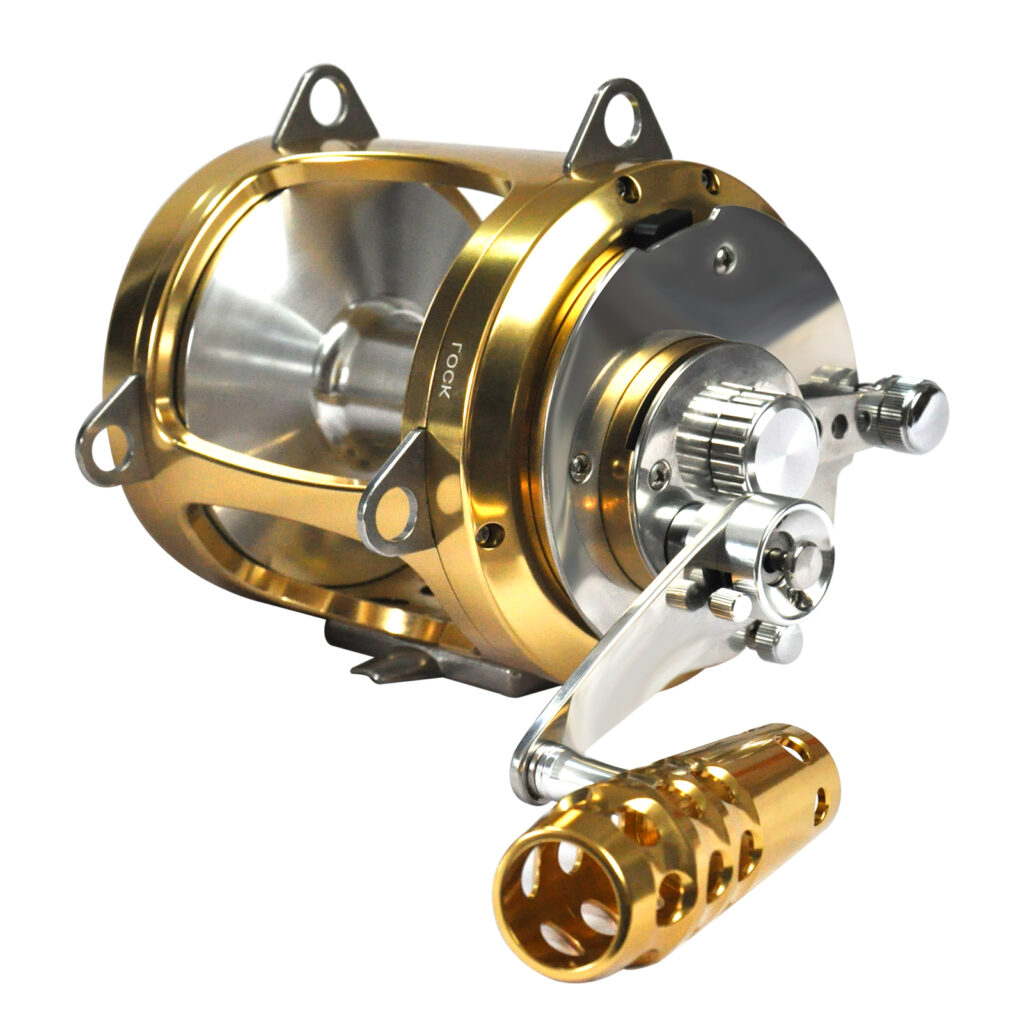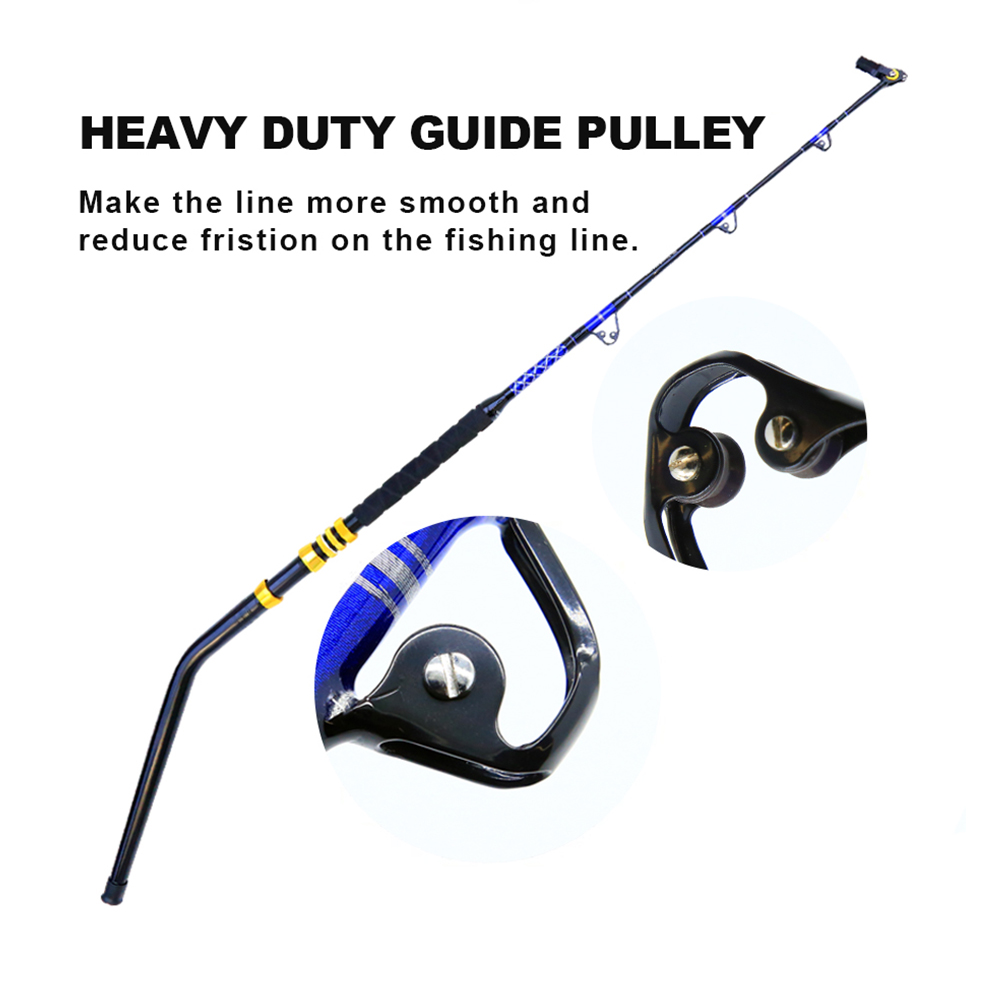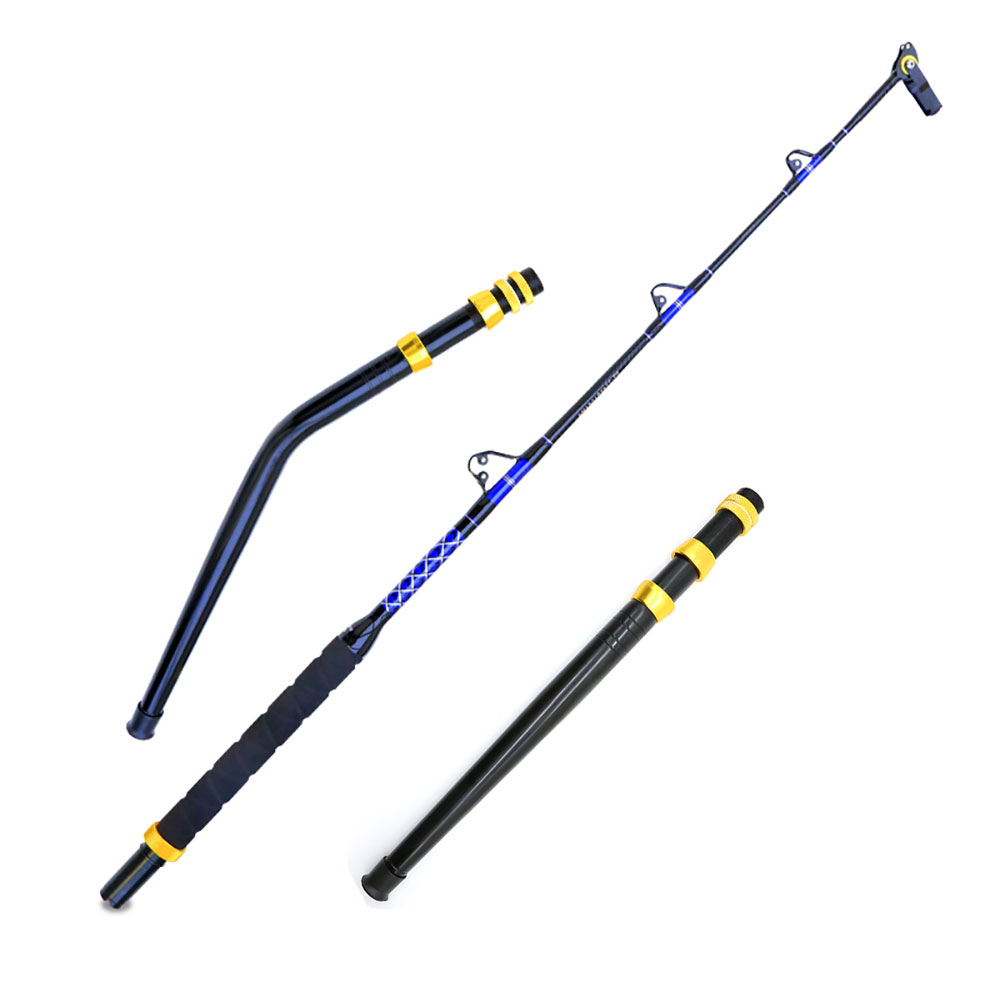Now you’re ready to start your fishing hobby in earnest and hopefully complete your setup.The problem is that figuring out how to set up a saltwater fishing rod for the first time can be overwhelming.Don’t worry, we have the guide that beginners like you need to learn.
To properly set up a saltwater fishing rod, perform the following steps:
(1)Attach Rod, Reel, and Line
(2)Rig the Line and Lures
(3)Set Up Spinning Rod and Reel
(4)Set Up Trolling Rod
(5)Practice Makes Perfect
Attach Rod, Reel, and Line

The first thing you want to do is set up your rod, reel and line so that they are properly connected.
This is easy to do, but it still takes a few tries to get things right.
Here is what you should do:
1.Find the reel seat on your rod; this is where the reel attaches to the rod.
2.Slide the reel into place and then secure it in place while tightening the ring where the pole meets the reel until it is secure.
3.Grab the end of the line from the reel and thread it through the eyelet on the rod.
4.Pull the line through the end so you can do the next step.
5.Attach some cylinder counterweights to the line and slide them up the line.
6.Tie the swivel to the line with a fisherman’s knot.
7.Make sure the swivel is secure, as you will be connecting any wires to this swivel.
These are the basic steps you need to know in order to secure the reel, rod and line in place.
From there, you can proceed to set up your prospect.
Rig the Line and Lures

There are different types of lead line rigs that can be used when saltwater fishing, and they all serve different purposes.
Depending on where you will be fishing and what type of bait you want to use, you can decide which lead to set up first.
Let’s take a look at some of the most common setups.
How to set up a saltwater fishing rod
Rig #1: Carolina Rig
Ideal for keeping bait or lures near the bottom without getting stuck on the bottom, the Carolina rig can be used with both artificial and real lures.
To create this rig, do the following:
Make sure your main line has a sinking egg ball and a swivel.
Attach a 6 to 12 inch long leader.
Sneak the fish onto the hook or other bait.
Adjust the weight of the sinker ball on the main line to the depth you want it to be.
As you can see, this is a simple setup, but it is a very effective one.
Rigging #2: Double Hook Bottom Rigging
This is one of the most basic and popular saltwater rigging options you can find.
Like the Carolina rig, you can easily tie this double-hook setup to itself by
Tie four three-inch dropper loops to about two feet of line (preferably 30 to 50 pounds of monofilament). Space them about three inches apart.
Place a sinker ball on the bottom ring and a hook on each of the remaining rings.
The top ring should be used to attach the entire rigging to the main line; you can use the swivel already installed to do this.
If you plan to chase bigger fish, you will want to modify this rigging to make it stronger, using a stronger rope and reinforced swivel instead of the simple rings on the rigging.
Rigging #3: Three-way saltwater rig
This rigging is very similar to the two-hook rigging, but it has only one hook instead of two.
Here is how to set up this rig easily:
Attach a three-way swivel to the main line.
Tie a short lead to one of the eyes and a long lead to the other eye.
Place a stretch card ball on the short lead and a hook or bait on the other end.
This setup will allow the shorter lead to drag on the bottom while the decoy on the longer lead floats above it.
Set Up Spinning Rod and Reel
One of the most common rod and reel setups for saltwater fishermen today is the spinning method, which uses a fixed spool of line mounted directly below the spinning rod. These are a popular choice for beginners because they offer decent power and precision without the need for expensive manufacturing.
To fish with a spinning spool, simply hold the rod and spool in your dominant hand and use your other hand to operate the spool with your thumb or index finger. When you’re not fishing, a tension rod keeps the line from leaking out of the reel. If you need more power for a big catch, simply press down on the tip of the rod to get more tension – however, this is only necessary when using freshwater rods, as saltwater rods do not require any additional tension.
Spinning spools are available in two different types: braided spools and monofilament spools. We recommend using a spinning reel with a braided spool because it is very strong and abrasion resistant; this means that even if you are at the beach, you don’t have to worry about broken or weakened line.
Another benefit of starting with a spinning rod and reel is that it has multiple methods of catching fish. If you’re inexperienced, try simple casting or casting before moving on to more challenging tactics like bottom fishing – there’s no need to buy two separate rods until you know exactly what you want to do.
Set Up Trolling Rod

The trolling rod is often considered an upgrade to the baitcasting unit, which includes a rotating spool located at the top of the rod. The reel uses a horizontal drag system that allows you to set the maximum drag and then adjust the pressure with a lever on the side of the reel.
These reels are shorter than most other types of reels and are about 6 to 7 feet long. Instead of manually attaching the reel to the bottom of the rod, they are held in place by a metal clip that slides onto the end of the rod. This allows you to fish quickly in the ocean, adjusting line and tension.
The trolling rods and reels can support a variety of different fish sizes and will be sorted according to the line test they are intended to support. Naturally, their 20-pound combo is not conducive to larger fish; on the other hand, a 130-pound combo can handle a lot.
Practice Makes Perfect
It’s easy to forget to learn how to rig saltwater rods and turn to buying riggings instead, but tying up and making a rig is very easy.
In addition, making your own rig helps you better understand what happens when you put a rope in the water.
You’ll be a better angler when you understand what’s happening underwater.
Conclusion about Set Up Your Rod For Saltwater Fishing
Many people who enjoy fishing have never taken the time to set up their tackle before. Maybe you’ve done a lot of offshore saltwater fishing on your charter and the equipment is not your responsibility.
After reading this article, you can easily start your fishing trip!
FAQ about Set Up Your Rod For Saltwater Fishing
Q:I am on the west coast Sarasota area. Can you tell me what wind and weather conditions tend to be calm and rough so I plan trips on the bays and within ten miles? I’m sure you must check a source before venturing out. Thank you
A:If you’re fishing out of Sarasota on the west coast of Florida you’ll be looking for an East wind that’ll lay down your seas really calm and create a swell that will come in from the West. The gulf is a little bit tricky though when it comes to that because you will have an East wind which will make it bumpy on the way back to shore. That’s just the way it is regardless of where you’re fishing. If you have a west wind and you want a fish and calm seas you’ll want the winds to be between 5 and 10 knots that way it’s nothing ridiculously bumpy for when you get out there and so you can enjoy. I usually look at the website from Noaa for my Marine forecasts. They’re usually fairly accurate and they update it a couple of times a day. Hope this helps. Thanks again for your supportive channel I truly and sincerely appreciate it.
Q:I was always wondering how good are those rods from coastal because the price on them last time I checked its pretty reasonable and I dare to say that they are leaning towards the cheaper side of the market. Are they any good?
A:The coastal fishing equipment rods are pretty good. They’re a great price and a great deal and I do hold up against big fish. If you’re trying to stick to some sort of budget you’re definitely getting your money’s worth out of the rods. Any other comparable rod from a more well-known company like Star rod or pen or daiwa is going to be 3 to 4 times the price of these rods. But I’ve never had any problems with it mechanically speaking. Hope this helps. Thanks again for taking out time to stop by and chat with me I truly and sincerely appreciate it. Always great to hear from you. Thanks again.
Q:Would you recommend this knot on a 30# mono set up?
A:Yes of course you can use this not on 30 lb test. Personally I would just go with a standard clinch knot wrapped around your main line six times and then send back through. Hope this helps. Thanks again for your support and channel I truly and sincerely appreciate it.

